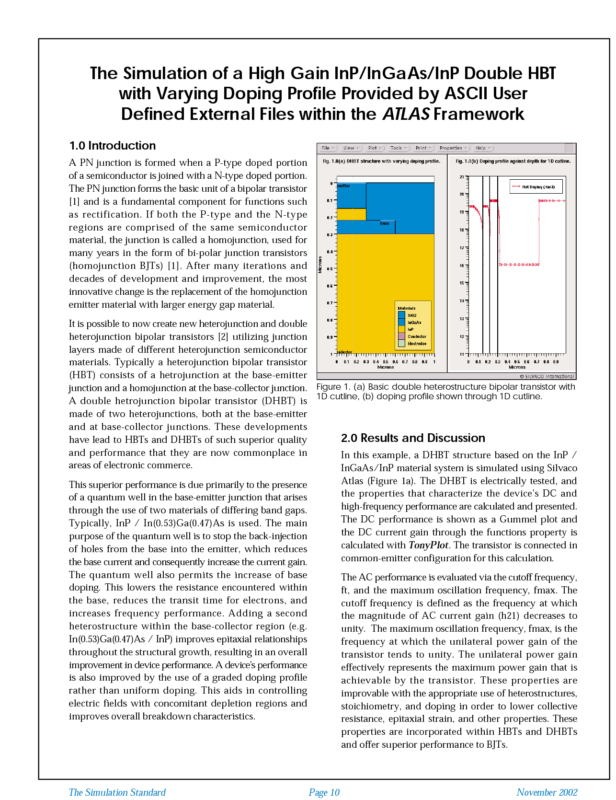Simulation of a High Gain InP/InGaAs/InP Double HBT with Varying Doping Profile within ATLAS
Introduction
A PN junction is formed when a P-type doped portion of a semiconductor is joined with a N-type doped portion. The PN junction forms the basic unit of a bipolar transistor [1] and is a fundamental component for functions such as rectification. If both the P-type and the N-type regions are comprised of the same semiconductor material, the junction is called a homojunction, used for many years in the form of bi-polar junction transistors (homojunction BJTs) [1]. After many iterations and decades of development and improvement, the most innovative change is the replacement of the homojunction emitter material with larger energy gap material.
It is possible to now create new heterojunction and double heterojunction bipolar transistors [2] utilizing junction layers made of different heterojunction semiconductor materials. Typically a heterojunction bipolar transistor (HBT) consists of a hetrojunction at the base-emitter junction and a homojunction at the base-collector junction. A double hetrojunction bipolar transistor (DHBT) is made of two heterojunctions, both at the base-emitter and at base-collector junctions. These developments have lead to HBTs and DHBTs of such superior quality and performance that they are now commonplace in areas of electronic commerce.



